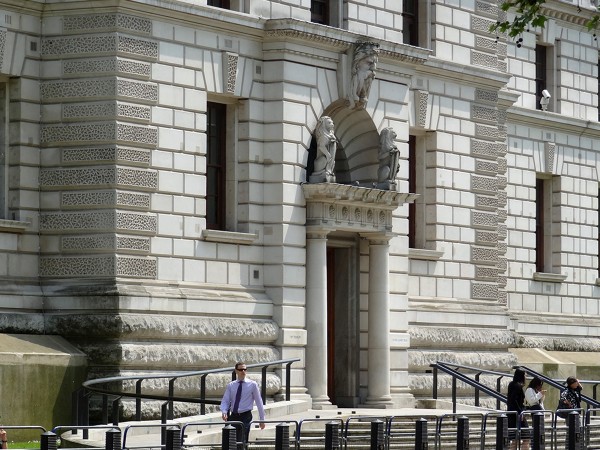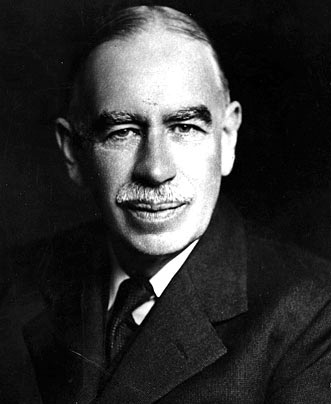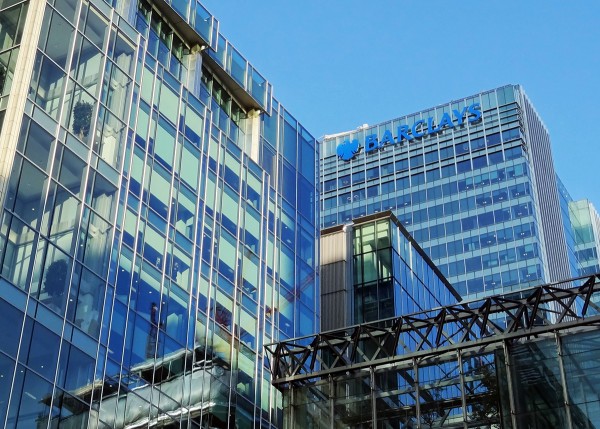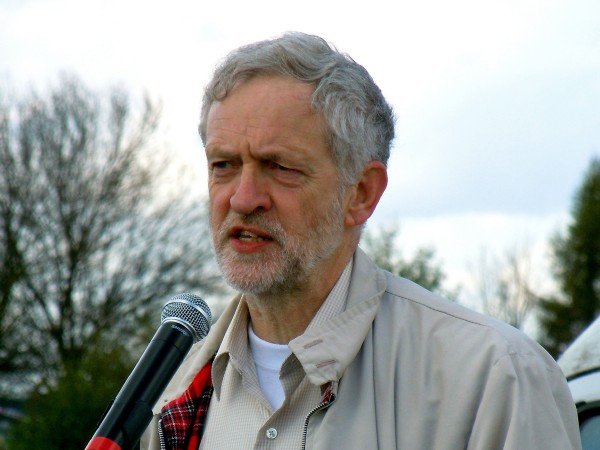 In three interesting articles, linked below, the authors consider the state of economies since the financial crisis of 2007–8 and whether governments have the right tools to tackle future economic shocks.
In three interesting articles, linked below, the authors consider the state of economies since the financial crisis of 2007–8 and whether governments have the right tools to tackle future economic shocks.
There have been some successes over the past 10 years, in particular keeping inflation close to central bank targets despite considerable shocks (see the Vox article). Also unemployment has fallen in most countries and to very low levels in some, including the UK.
But economic growth has generally remained well below the levels prior to the financial crisis, with low productivity growth being the main culprit. Indeed, many people have seen no growth at all in their real incomes over the past 10 years, with low unemployment being bought at the cost of a growth in zero-hour contracts and work in the gig economy. And what economic growth we have seen has been largely the result of taking up slack through unprecedentedly loose monetary policy.
Fiscal policy, except in the period directly following the financial crisis, has generally been tight as governments have sought to reduce their deficits and slow down the growth in their debt.
But what will happen if economies once more slow? Or, worse still, what will happen if there is another global recession? Do countries have the policies to tackle the problem this time round?
 Quantitative easing could be used again, but many economists believe that it will have more limited scope if confined to the purchase of assets in the secondary market. Also, there is little scope for reducing interest rates, which, despite some modest rises in the USA, remain at close to zero in most developed countries.
Quantitative easing could be used again, but many economists believe that it will have more limited scope if confined to the purchase of assets in the secondary market. Also, there is little scope for reducing interest rates, which, despite some modest rises in the USA, remain at close to zero in most developed countries.
One possibility is a combination of monetary and fiscal policy, where new money is used to finance government expenditure on infrastructure, such as road and rail, broadband, green energy, hospitals and schools and colleges. This would avoid the need for governments to borrow on open markets as the spending would be financed by new government securities purchased directly by the central bank.
An objection to such ‘people’s quantitative easing‘, as it has been dubbed, is that it would effectively end the independence of central banks. This independence has been credited by many with giving central banks credibility in controlling inflation. Would inflationary expectations rise with people’s quantitative easing and, with it, actual inflation? A lot would depend on the extent to which this QE could still be conducted within a framework of targeting inflation and whether people’s expectations of inflation could be managed jointly by the government and central bank.
Articles
How should recessions be fought when interest rates are low? The Economist. Free exchange (21/10/17)
The economy is failing. We need to think radically about how to fix it The Guardian, Liam Byrne (25/10/17)
Elusive inflation and the Great Recession Vox, David Miles, Ugo Panizza, Ricardo Reis, Ángel Ubide (25/10/17)
Videos
 Economics since the crisis Vox on YouTube. Charles Goodhart (11/10/17)
Economics since the crisis Vox on YouTube. Charles Goodhart (11/10/17)
 Is the system broken? Vox on YouTube, Anat Admati (12/10/17)
Is the system broken? Vox on YouTube, Anat Admati (12/10/17)
 Signs of a crisis Vox on YouTube, Christian Thimann (19/10/17)
Signs of a crisis Vox on YouTube, Christian Thimann (19/10/17)
 Policy stances since 2007 Vox on YouTube, Paul Krugman (29/10/17)
Policy stances since 2007 Vox on YouTube, Paul Krugman (29/10/17)
 Did policymakers get it right? Vox on YouTube, Paul Krugman (4/10/17)
Did policymakers get it right? Vox on YouTube, Paul Krugman (4/10/17)
Questions
- Why, during the next recession, will the “zero lower bound” (ZLB) on interest rates almost certainly bite again?
- Why would the scope for QE, as conducted up to now, be more limited in the future if a recession were to occur?
- Why have central banks appeared to have been so successful in keeping inflation close to target despite negative and positive demand- and supply-side shocks?
- Why are the pressures on government expenditure likely to increase in the coming years?
- How would a temporary price-level target help to tackle a recession when the economy next bumps into the ZLB? What would limit its success?
- Is it appropriate for central banks to stick to an inflation target in times when there is an adverse supply-side shock resulting in cost-push inflation?
- Why might monetary policy conducted in a framework of inflation targeting tend to lessen the impact of a fiscal stimulus?
- What are the arguments for and against relaxing central bank independence and pursuing a co-ordinated fiscal and monetary policy?
- What are the arguments for and against using helicopter money to boost private expenditure during a future recession where interest rates are already near the ZLB?
- What are the arguments for and against using ‘people’s QE’?
 We’ve considered Keynesian economics and policy in several blogs. For example, a year ago in the post, What would Keynes say?, we looked at two articles arguing for Keynesian expansionary polices. More recently, in the blogs, End of the era of liquidity traps? and A risky dose of Keynesianism at the heart of Trumponomics, we looked at whether Donald Trump’s proposed policies are more Keynesian than his predecessor’s and at the opportunities and risks of such policies.
We’ve considered Keynesian economics and policy in several blogs. For example, a year ago in the post, What would Keynes say?, we looked at two articles arguing for Keynesian expansionary polices. More recently, in the blogs, End of the era of liquidity traps? and A risky dose of Keynesianism at the heart of Trumponomics, we looked at whether Donald Trump’s proposed policies are more Keynesian than his predecessor’s and at the opportunities and risks of such policies.
The article below, Larry Elliott updates the story by asking what Keynes would recommend today if he were alive. It also links to two other articles which add to the story.
Elliott asks his imaginary Keynes, for his analysis of the financial crisis of 2008 and of what has happened since. Keynes, he argues, would explain the crisis in terms of excessive borrowing, both private and public, and asset price bubbles. The bubbles then burst and people cut back on spending to claw down their debts.
 Keynes, says Elliott, would approve of the initial response to the crisis: expansionary monetary policy (both lower interest rates and then quantitative easing) backed up by expansionary fiscal policy in 2009. But expansionary fiscal policies were short lived. Instead, austerity fiscal policies were adopted in an attempt to reduce public-sector deficits and, ultimately, public-sector debt. This slowed down the recovery and meant that much of the monetary expansion went into inflating the prices of assets, such as housing and shares, rather than in financing higher investment.
Keynes, says Elliott, would approve of the initial response to the crisis: expansionary monetary policy (both lower interest rates and then quantitative easing) backed up by expansionary fiscal policy in 2009. But expansionary fiscal policies were short lived. Instead, austerity fiscal policies were adopted in an attempt to reduce public-sector deficits and, ultimately, public-sector debt. This slowed down the recovery and meant that much of the monetary expansion went into inflating the prices of assets, such as housing and shares, rather than in financing higher investment.
He also asks his imaginary Keynes what he’d recommend as the way forward today. Keynes outlines three alternatives to the current austerity policies, each involving expansionary fiscal policy:
|
|
| • |
Trump’s policies of tax cuts combined with some increase in infrastructure spending. The problems with this are that there would be too little of the public infrastructure spending that the US economy needs and that the stimulus would be poorly focused. |
| • |
Government taking advantage of exceptionally low interest rates to borrow to invest in infrastructure. “Governments could do this without alarming the markets, Keynes says, if they followed his teachings and borrowed solely to invest.” |
| • |
Use money created through quantitative easing to finance public-sector investment in infrastructure and housing. “Building homes with QE makes sense; inflating house prices with QE does not.” (See the blogs, A flawed model of monetary policy and Global warning). |
Increased government spending on infrastructure has been recommended by international organisations, such as the OECD and the IMF (see OECD goes public and The world economic outlook – as seen by the IMF). With the rise in populism and worries about low economic growth throughout much of the developed world, perhaps Keynesian fiscal policy will become more popular with governments.
Article
Keynesian economics: is it time for the theory to rise from the dead?, The Guardian, Larry Elliott (11/12/16)
Questions
- What are the main factors determining a country’s long-term rate of economic growth?
- What are the benefits and limitations of using fiscal policy to raise global economic growth?
- What are the benefits and limitations of using new money created by the central bank to fund infrastructure spending?
- Draw an AD/AS diagram to illustrate the effect of a successful programme of public-sector infrastructure projects on GDP and prices.
- Draw a Keynesian 45° line diagram to illustrate the effect of a successful programme of public-sector infrastructure projects on actual and potential GDP.
- Why might an individual country benefit more from a co-ordinated expansionary fiscal policy of all countries rather than being the only country to pursue such a policy?
- Compare the relative effectiveness of increased government investment in infrastructure and tax cuts as alterative forms of expansionary fiscal policy.
- What determines the size of the multiplier effect of such policies?
- What supply-side policies could the government adopt to back up monetary and fiscal policy? Are the there lessons here from the Japanese government’s ‘three arrows’?

The linked article below from The Economist looks at whether the election of Donald Trump, the effects of the Brexit vote and policies being pursued elsewhere in the world mark a new macroeconomic era. We may be about to witness rising inflation and the end of the era of tight fiscal policy and loose monetary policy. We might see a return of a more Keynesian approach to macreconomic policy.
According to the article, since the financial crisis of 2008, we have been witnessing economies stuck in a liquidity trap. In such cases, there is little scope for further reductions in interest rates. And increases in money supply, in the form of quantitative easing, tend to be held in idle balances, rather than being spent on goods and services. The idle balances take the form of increased bank reserves to rebuild their capital base and increased purchases of assets such as shares and property.
Even if people did believe that monetary policy would work to boost aggregate demand and result in higher inflation, then they would also believe that any such boost would be temporary as central banks would then have to tighten monetary policy to keep inflation within the target they had been set. This would limit spending increases, keeping the economy in the liquidity trap.
 With a liquidity trap, fiscal policy is likely to be much more effective than monetary policy in boosting aggregate demand. However, its scope to pull an economy out of recession and create sustained higher growth depends on the extent to which governments, and markets, can tolerate higher budget deficits and growing debt. With governments seeking to claw down deficits and ultimately debt, this severely limits the potential for using fiscal policy.
With a liquidity trap, fiscal policy is likely to be much more effective than monetary policy in boosting aggregate demand. However, its scope to pull an economy out of recession and create sustained higher growth depends on the extent to which governments, and markets, can tolerate higher budget deficits and growing debt. With governments seeking to claw down deficits and ultimately debt, this severely limits the potential for using fiscal policy.
With the election of Donald Trump, we might be entering a new era of fiscal policy. He has promised large-scale infrastructure spending and tax cuts. Although he has also promised to reduce the deficit, he is implying that this will only occur when the economy is growing more rapidly and hence tax revenues are increasing.
Is Donald Trump a Keynesian? Or are such promises merely part of campaigning – promises that will be watered down when he takes office in January? We shall have to wait and see whether we are about to enter a new era of macroeconomic policy – an era that has been increasingly advocated by international bodies, such as the IMF and the OECD (see the blog post, OECD goes public).
Article
Slumponomics: Trump and the political economy of liquidity traps The Economist (10/11/16)
Questions
- Explain what is meant by ‘the liquidity trap’.
- Why is monetary policy relatively ineffective in a liquidity trap? Use a diagram to support your argument.
- Why is fiscal policy (in the absence of public-sector deficit targets) relatively effective in a liquidity trap? Again, use a diagram to support your argument.
- Examine how the Japanese government attempted to escape the liquidity trap? (Search this site for ‘Abenomics’.)
- In what ways may the depreciation of the pound since the Brexit vote help the UK to escape the liquidity trap?
- Could a different form of quantitative easing, known as ‘helicopter money’, whereby government or private spending is financed directly by new money, allow countries to escape the liquidity trap? (Search this site for ‘helicopter money’.)
- Why may a political upheaval be necessary for a country to escape the liquidity trap?
 Project Syndicate is an organisation which produces articles on a range of economic, political and social topics written by eminent scholars, political and business leaders, policymakers and civic activists. It then makes these available to news media in more than 150 countries. Here we look at four such articles which assess the outlook for the European and global economies and even that of capitalism itself.
Project Syndicate is an organisation which produces articles on a range of economic, political and social topics written by eminent scholars, political and business leaders, policymakers and civic activists. It then makes these available to news media in more than 150 countries. Here we look at four such articles which assess the outlook for the European and global economies and even that of capitalism itself.
The general tone is one of pessimism. Despite unconventional monetary policies, such as quantitative easing (QE) and negative nominal interest rates, the global recovery is anaemic. As the Nouriel Roubini articles states:
Unconventional monetary policies – entrenched now for almost a decade – have themselves become conventional. And, in view of persistent lacklustre growth and deflation risk in most advanced economies, monetary policymakers will have to continue their lonely fight with a new set of ‘unconventional unconventional’ monetary policies.
Perhaps this will involve supplying additional money directly to consumers and/or business in a so-called ‘helicopter drop’ of money. Perhaps it will be supplying money directly to governments to finance infrastructure projects – a policy dubbed ‘people’s quantitative easing‘. Perhaps it will involve taxing the holding of cash by banks to encourage them to lend.
 The Hans-Werner Sinn article looks at some of the consequences of the huge amount of money created through QE and continuing to be created in the eurozone. Although it has not boosted consumption and investment nearly as much as desired, it has caused bubbles in various asset markets. For example, the property market has soared in many countries:
The Hans-Werner Sinn article looks at some of the consequences of the huge amount of money created through QE and continuing to be created in the eurozone. Although it has not boosted consumption and investment nearly as much as desired, it has caused bubbles in various asset markets. For example, the property market has soared in many countries:
Property markets in Austria, Germany, and Luxembourg have practically exploded throughout the crisis, as a result of banks chasing borrowers with offers of loans at near-zero interest rates, regardless of their creditworthiness.
The German property boom could be reined in with an appropriate jump in interest rates. But, given the ECB’s apparent determination to head in the opposite direction, the bubble will only grow. If it bursts, the effects could be dire for the euro.
The Jean Pisani-Ferry article widens the analysis of the eurozone’s problems. Like Roubini, he considers the possibility of a helicopter drop of money, which “would be functionally equivalent to a direct government transfer to households, financed by central banks’ permanent issuance of money”.
 Without such drastic measures he sees consumer and business pessimism (see chart) undermining recovery and making the eurozone vulnerable to global shocks, such as further weakening in China. (Click here for a PowerPoint of the chart.)
Without such drastic measures he sees consumer and business pessimism (see chart) undermining recovery and making the eurozone vulnerable to global shocks, such as further weakening in China. (Click here for a PowerPoint of the chart.)
Finally, Anatole Kaletsky takes a broad historical view. He starts by saying that “All over the world today, there is a sense of the end of an era, a deep foreboding about the disintegration of previously stable societies.” He argues that the era of ‘leaving things to the market’ is coming to an end. This was an era inspired by the monetarist and supply-side revolutions of the 1960s and 1970s that led to the privatisation and deregulation policies of Reagan, Thatcher and other world leaders.
But if the market cannot cope with the complexities of today’s world, neither can governments.
If the world is too complex and unpredictable for either markets or governments to achieve social objectives, then new systems of checks and balances must be designed so that political decision-making can constrain economic incentives and vice versa. If the world is characterized by ambiguity and unpredictability, then the economic theories of the pre-crisis period – rational expectations, efficient markets, and the neutrality of money – must be revised.
… It is obvious that new technology and the integration of billions of additional workers into global markets have created opportunities that should mean greater prosperity in the decades ahead than before the crisis. Yet ‘responsible’ politicians everywhere warn citizens about a ‘new normal’ of stagnant growth. No wonder voters are up in arms.
His solution has much in common with that of Roubini and Pisani-Ferry. “Money could be printed and distributed directly to citizens. Minimum wages could be raised to reduce inequality. Governments could invest much more in infrastructure and innovation at zero cost. Bank regulation could encourage lending, instead of restricting it.”
So will there be a new era of even more unconventional monetary policy and greater regulation that encourages rather than restricts investment? Read the articles and try answering the questions.
Articles
Unconventional Monetary Policy on Stilts Project Syndicate, Nouriel Roubini (1/4/16)
Europe’s Emerging Bubbles Project Syndicate, Hans-Werner Sinn (28/3/16)
Preparing for Europe’s Next Recession Project Syndicate, Jean Pisani-Ferry (31/3/16)
When Things Fall Apart Project Syndicate, Anatole Kaletsky (31/3/16)
Questions
- Explain how a ‘helicopter drop’ of money would work in practice.
- Why has growth in the eurozone been so anaemic since the recession of 2009/10?
- What is the relationship between tightening the regulations about capital and liquidity requirements of banks and bank lending?
- Explain the policies of the different eras identified by Anatole Kaletsky.
- Would it be fair to describe the proposals for more unconventional monetary policies as ‘Keynesian’?
- If quantitative easing was used to finance government infrastructure investment, what would be the effect on the public-sector deficit and debt?
- If the inflation of asset prices is a bubble, what could cause the bubble to burst and what would be the effect on the wider economy?
 Jeremy Corbyn, the newly elected leader of the Labour Party, is proposing a number of radical economic policies. One that has attracted considerable attention is for a new form of QE, which has been dubbed ‘people’s quantitative easing’.
Jeremy Corbyn, the newly elected leader of the Labour Party, is proposing a number of radical economic policies. One that has attracted considerable attention is for a new form of QE, which has been dubbed ‘people’s quantitative easing’.
This would involve newly created money by the Bank of England being directly used to fund spending on large-scale housing, energy, transport and digital projects. Rather than the new money being used to purchase assets, as has been the case up to now, with the effect filtering only indirectly into aggregate demand and even more indirectly into aggregate supply, under the proposed scheme, both aggregate demand and aggregate supply would be directly boosted.
Although ‘conventional’ QE has worked to some extent, the effects have been uneven. Asset holders and those with large debts, such as mortgages, have made large gains from higher asset prices and lower interest rates. By contrast, savers in bank and building society accounts have seen the income from their savings decline dramatically. What is more, the indirect nature of the effects has meant time lags and uncertainty over the magnitude of the effects.
But despite the obvious attractiveness of the proposals, they have attracted considerable criticism. Some of these are from a political perspective, with commentators from the right arguing against an expansion of the state. Other criticisms focus on the operation and magnitude of the proposals
 One is that it would change the relationship between the Bank of England and the government. If the Bank of England created money to fund government projects, that would reduce or even eliminate the independence of the Bank. Independence has generally been seen as desirable to prevent manipulation of the central bank by the government for short-term political gain. Those in favour of people’s QE argue that the money would be directed into a National Investment Bank, which would then make the investment allocation decisions. The central bank would still be independent in deciding the amount of QE.
One is that it would change the relationship between the Bank of England and the government. If the Bank of England created money to fund government projects, that would reduce or even eliminate the independence of the Bank. Independence has generally been seen as desirable to prevent manipulation of the central bank by the government for short-term political gain. Those in favour of people’s QE argue that the money would be directed into a National Investment Bank, which would then make the investment allocation decisions. The central bank would still be independent in deciding the amount of QE.
This leads to the second criticism and that is about whether further QE is necessary at the current time. Critics argue that while QE of whatever type was justified when the economy was in recession and struggling to recover, now would be the wrong time for further stimulus. Indeed, it could be highly inflationary. The economy is currently expanding. If banks respond by increasing credit, the velocity of circulation of narrow money could rise and broad money supply grow, providing enough money to underpin a growing economy.
Many advocates of people’s QE accept this second point and see it as a contingency plan in case the economy fails to recover and further monetary stimulus is deemed necessary. If further QE is not felt necessary by the Bank of England, then the National Investment Bank could fund investment through conventional borrowing.
The following articles examine people’s QE and look at its merits and dangers. Given the proposal’s political context, several of the articles approach the issue from a very specific political perspective. Try to separate the economic analysis in the articles from their political bias.
Jeremy Corbyn’s proposal
The Economy in 2020 Jeremy Corbyn (22/7/15)
Articles
People’s quantitative easing — no magic Financial Times, Chris Giles (13/8/15)
How Green Infrastructure Quantitative Easing would work Tax Research UK, Richard Murphy (12/3/15)
What is QE for the people? Money Week, Simon Wilson (22/8/15)
QE or not QE? A slippery slope to breaking the Bank EconomicsUK.com, David Smith (23/8/15)
We don’t need “People’s QE”, basic economic literacy is enough Red Box, Jonathan Portes (13/8/15)
Is Jeremy Corbyn’s policy of ‘quantitative easing for people’ feasible? The Guardian, Larry Elliott (14/8/15)
Corbynomics: Quantitative Easing for People (PQE) Huffington Post, Adnan Al-Daini (7/9/15)
Corbyn’s “People’s QE” could actually be a decent idea FT Alphaville, Matthew C. Klein (6/8/15)
Jeremy Corbyn’s ‘People’s QE’ would force Britain into three-year battle with the EU The Telegraph, Peter Spence (15/8/15)
Would Corbyn’s ‘QE for people’ float or sink Britain? BBC News, Robert Peston (12/8/15)
Strategic Quantitative Easing – public money for public benefit New Economics Foundation blog, Josh Ryan-Collins (12/8/15)
People’s QE and Corbyn’s QE Mainly Macro blog, Simon Wren-Lewis
You can print money, so long as it’s not for the people The Guardian, Zoe Williams (4/10/15)
Questions
- What is meant by ‘helicopter money’? How does it differ from quantitative easing as practised up to now?
- Is people’s QE the same as helicopter money?
- Can people’s QE take place alongside an independent Bank of England?
- What is meant by the velocity of circulation of money? What happened to the velocity of circulation following the financial crisis?
- How does conventional QE feed through into aggregate demand?
- Under what circumstances would people’s QE be inflationary?
 In three interesting articles, linked below, the authors consider the state of economies since the financial crisis of 2007–8 and whether governments have the right tools to tackle future economic shocks.
In three interesting articles, linked below, the authors consider the state of economies since the financial crisis of 2007–8 and whether governments have the right tools to tackle future economic shocks. Quantitative easing could be used again, but many economists believe that it will have more limited scope if confined to the purchase of assets in the secondary market. Also, there is little scope for reducing interest rates, which, despite some modest rises in the USA, remain at close to zero in most developed countries.
Quantitative easing could be used again, but many economists believe that it will have more limited scope if confined to the purchase of assets in the secondary market. Also, there is little scope for reducing interest rates, which, despite some modest rises in the USA, remain at close to zero in most developed countries. Economics since the crisis Vox on YouTube. Charles Goodhart (11/10/17)
Economics since the crisis Vox on YouTube. Charles Goodhart (11/10/17) Is the system broken? Vox on YouTube, Anat Admati (12/10/17)
Is the system broken? Vox on YouTube, Anat Admati (12/10/17) Signs of a crisis Vox on YouTube, Christian Thimann (19/10/17)
Signs of a crisis Vox on YouTube, Christian Thimann (19/10/17) Policy stances since 2007 Vox on YouTube, Paul Krugman (29/10/17)
Policy stances since 2007 Vox on YouTube, Paul Krugman (29/10/17) Did policymakers get it right? Vox on YouTube, Paul Krugman (4/10/17)
Did policymakers get it right? Vox on YouTube, Paul Krugman (4/10/17)







